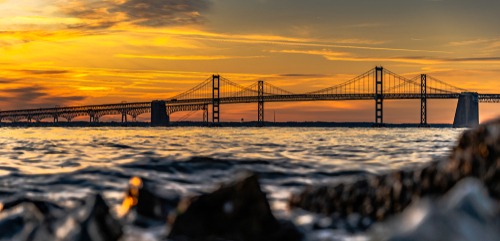
The Tier 1 Draft Environmental Impact Statement (DEIS) for the Chesapeake Bay Crossing Study in Baltimore, Md., is available for public review and comment through May 10, officials said Tuesday.
Originally scheduled to be released in December, the draft statement was delayed because of concerns over rising state COVID-19 rates.
The Chesapeake Bay Crossing study looks at how two-mile-wide corridors would increase capacity and access across the Chesapeake Bay, improving mobility, travel reliability, and safety of the William Preston Lane, Jr. Memorial Bridge while looking also determining whether or not the expansion would be financially viable and environmentally responsible.
The DEIS is available at baycrossingstudy.com. Additionally, the Maryland Transportation Authority (MDTA) and the Federal Highway Administration (FHWA) will hold public hearings to allow for additional opportunities for the public to review and comment on the publication, prepared pursuant to the National Environmental Policy Act (NEPA).
A virtual hearing – Public Hearing Virtual Information Room – is available at baycrossingstudy.com for members of the public to review the information in the DEIS, register to give public testimony, and learn how to submit written comments. Call-in and in-person hearings will be held in April.
“We are eager to receive feedback from residents, communities, officials, key stakeholders, and members of the public on the DEIS,” said Maryland Department of Transportation (MDOT) Secretary and MDTA Chairman Greg Slater. “We’re working hard to make this process safe by following the guidance of public health officials, while ensuring every interested voice is heard.”
The DEIS evaluated four alternatives – the No-Build alternative and three corridor alternatives; Corridor 6, which follow MD 177 and ties into US 301; Corridor 7, which follows the existing road network along US 50/301; and Corridor 8, which follows MD 214 and MD 424 to tie into US 50.
MDTA has identified Corridor 7 as the recommended preferred corridor alternative.
“Of the no-build alternative and the three corridor alternatives retained in the federal environmental process for further study, the study’s traffic models indicate that building a third crossing within the same corridor as the existing Bay Bridge – Corridor 7 – would have the most positive impact on reducing traffic at the Bay Bridge,” said MDTA Executive Director Jim Ports.